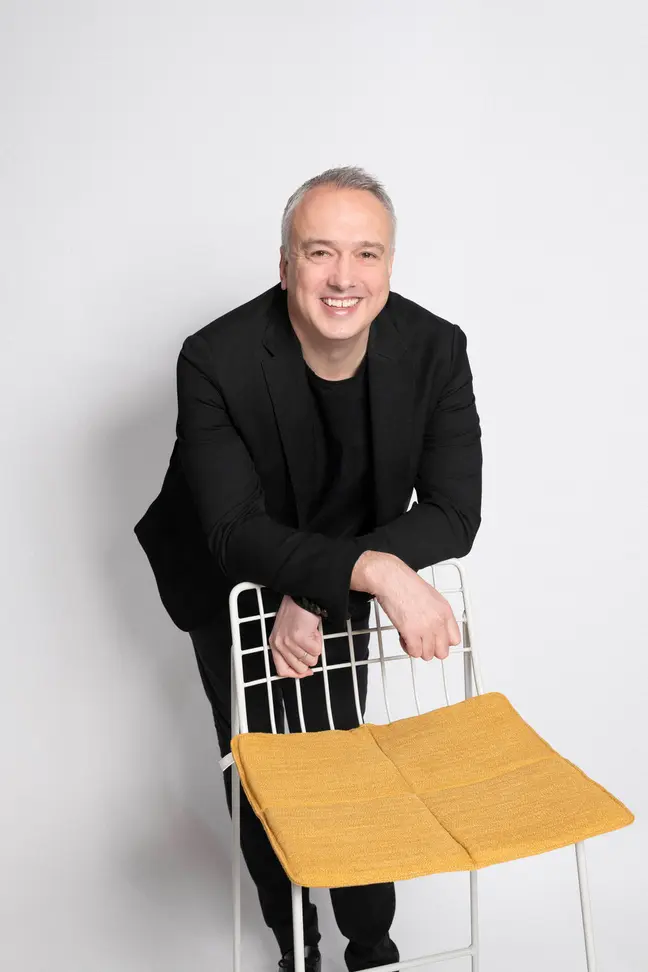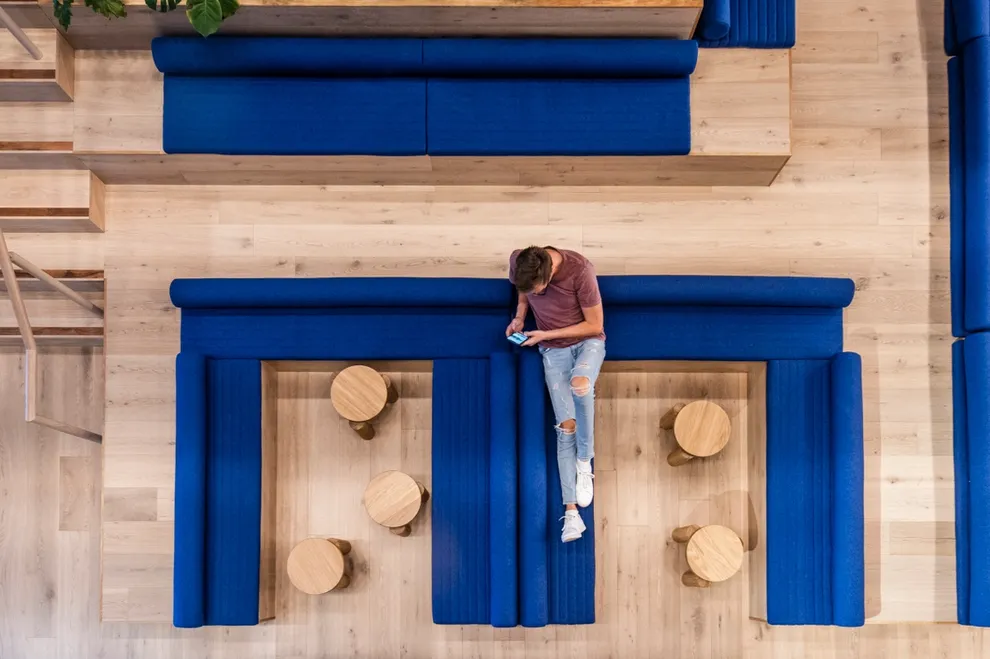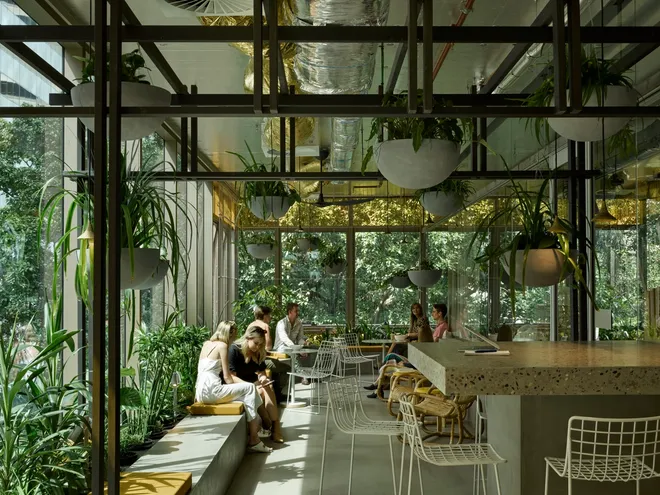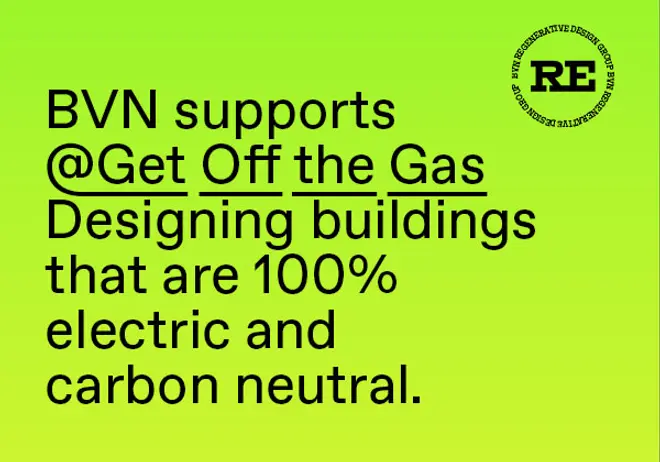BVN Stories, Opinion — December 15, 2022
The journey toward Net Positive
Co-CEO's Neil Logan + Ninotschka Titchkosky on being "net positive", sharing green ambitions with clients, and why Atlassian Central is the most important act of sustainability today.
When a project like Atlassian Central comes along that matches the sustainability ambitions of BVN it’s met with enormous passion and energy. For many of our architects, it’s the reason they’re here.
Within the collective, there’s a big pool of knowledge about sustainable design for both urban planning and buildings. It’s a great strength for BVN and our clients because all want future-ready buildings: places that perform optimally right now can easily adapt as needs change, and also – most importantly - contribute positively to the planet over time. It’s a recipe for future-ready market investment as well as architecture with integrity.
Atlassian Central is an exemplar of shared sustainability ambitions between client and architects, and a green project that’s also positioned for a changing market.

The project team has worked extensively with Transport for NSW, adjacent landowners, the City of Sydney, Heritage NSW and the NSW Dept Planning, Industry & Environment to ensure all aspects of the precinct are considered in the design and public realm.
NT: Atlassian Central is our “north star”. With such high standards, it’s inspiring new thinking right across BVN and accelerating our journey toward net positive impact. That means making design decisions that support innovation, push the sustainability expectations of new buildings further, and support the growth of sustainable industries. It means we will end up with not only an amazing building, but a turbo-charged supply chain that can enable more. We are both architects and advocates with this project!
NT: Absolutely! Atlassian Central will challenge every other developer, architect, building company, materials supplier and state government stakeholder. Not just challenge, but inspire, and lay the groundwork for more.
NT: They’re exceptional. The tower will be fully electrified and procure GreenPower for operation. Mixed mode ventilation significantly reduces the need for traditional 100% air conditioning. And the materiality of the structure - integrated lower embodied carbon steel and concrete, and mass timber - is a game changer.
We’d like to think by showing what’s possible, Atlassian Central will help to increase demand for more low carbon building products to create more volume, which will drive more competition, and price equity.
Neil: The biophilic elements are equally significant - air quality and wellbeing will be a big contributor to Atlassian Central’s sustainability credentials. And so is circular economy thinking. All the materials taken from the original historic structure are being dismantled joist by joist to be re-installed in its entirety at the end of the project to enable it to have a second life.
NT: Yes this is exactly what the project intended and what BVN wants to reinforce. To lift standards and normalise ambition. That’s why the Atlassian Central project is such a significant act of sustainability.



Atlassian Central is designed for 50% less embodied carbon and 100% renewables.
Q: Can you explain “net zero” in more detail?
Neil: Conventionally, “net zero” is about carbon emissions, however, we take a whole systems view beyond this to seek more than just neutrality. You have to think about the whole system in which we operate – social impact, ecology and infrastructure.
NT: If we’re going to make real change we have to go beyond the minimum both in our own business and in our projects. Being on the journey towards net positive is about delivering gains for society at large. It defines how we want to run our business, so that everyone gains. It will take a bit of time to achieve but we will do it.
Neil: The ultimate question we have to answer is: is the world better off because our business is in it? For us, it’s a resounding “yes”. But it’s also a challenge we have to meet every single day.

Neil: Yes absolutely – finally they’re saying the right things, moving towards renewable energies, spending money on the national grid to take renewable supplies. The only issue is that politics is a cycle – we hope they’ll put in place systems that will allow success in the future. Beyond their own next election.
Q: If developers are resistant to sustainability because of the cost, how do you bring them on board?
NT: Not all developers are resistant. People across the board are demanding higher sustainability credentials, and in fact, consumer demand is having a big effect on driving change in attitudes. At the same time, we’re actively seeking to work with those who share sustainability ambitions, and our own vision for design and construction that’s better for the planet. But it’s not actually that designing with a sustainability mindset costs more. It’s that building costs too much. The more we move towards prefabrication and modular construction, the closer we’ll get to where we all want to be.
That’s why our innovation projects are really important: our partnership with GPT, for example, means we’re able to design modular workplaces that use a kit-of-parts approach that’s adaptable to change, cheaper to build and eliminates waste.
Our work on replacing ducted air conditioning with a new air diffusion system made of recycled plastic (SR2) is a way to evolve old buildings – especially less premium stock. It’s another of our innovations without the cost to the budget and the planet.
Creativity is really the way forward with this issue. Creativity and innovation.
Neil: This question is also why we’ve created our in-house BVN REGENerate program. We’re partnering with The Footprint Company to do two things.
First, to audit the embodied carbon of all our projects and understand how to do better. Second, to upskill all our people to both design and advocate for a net positive approach to projects.
So for clients, partnering with us means also accessing this kind of support – advice and decision-making with great integrity for the planet. And smart design that considers the future market value for properties



A kit-of-parts approach that’s adaptable to change, cheaper to build and eliminates waste.
Q: Do you see the Net Positive approach as having a positive impact on the actual value of client’s commercial property developments?
NT: Absolutely. The market’s changing especially since the pandemic. The challenge for office buildings is largely related to the different needs associated with a hybrid workforce.. We’re seeing just how important it is for workplaces to be exceptional, and for employers to have strong, authentic sustainability alignments. That starts with the office itself.
Neil: And for residential towers it’s similar. Tenants and buyers are looking for homes that will increase in value over time, in a volatile market. They don’t want to buy into multi-storey apartment buildings that run on gas, if they know future buyers will want ones that run on green energy, for example.
NT: On our new website! And by following us on Linked In. We’re being very transparent about how we move along this pathway and we want to make it easy for others to share in our learnings.
Neil: But also, come visit our studios and talk to us. Our Brisbane Studio
There's some interesting reading in Paul Polman and Andrew Winston's book "Net Positive: how courageous companies thrive by giving more than they take" is a great guide https://netpositive.world/book/
Atlassian’s sustainability story in a nutshell:
- 50% reduction in upfront embodied carbon (A1-A3) in the core and shell of the building (structure and facade) compared to a conventionally constructed building
- 50% reduction in operational energy use compared to a conventional building5.5-star NABERS Energy Commitment Agreement and targeting 6-star Green Star rating.100% renewable energy from day one of operation
- Parks, biophilia, timber environment, access to fresh air all the way up the tower
- Overarching ambition to improve the ecology and peoples’ lives
- Naturally ventilated “Park Space” in each 4 level habitat.






